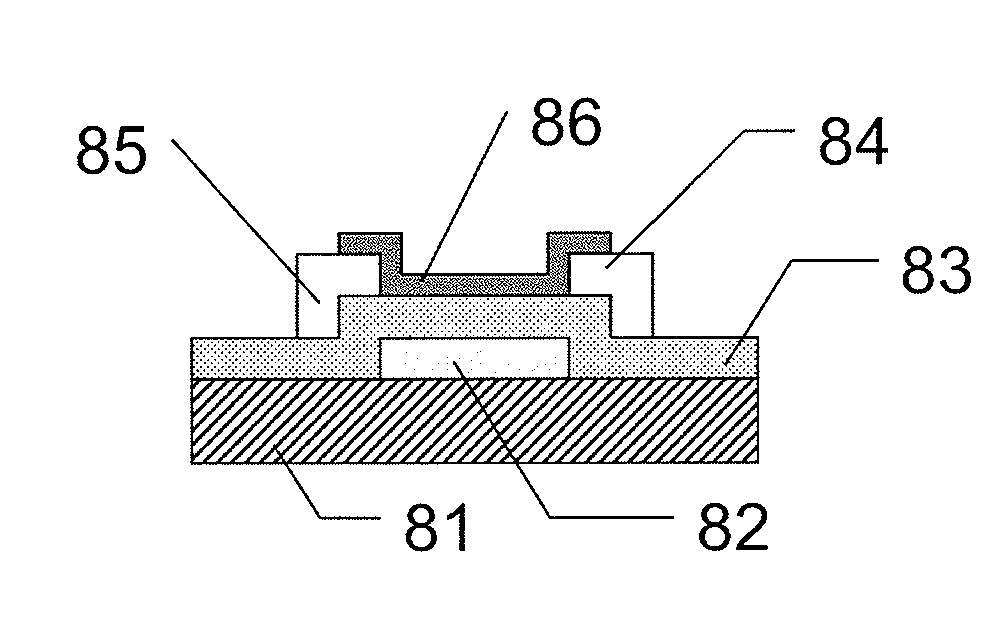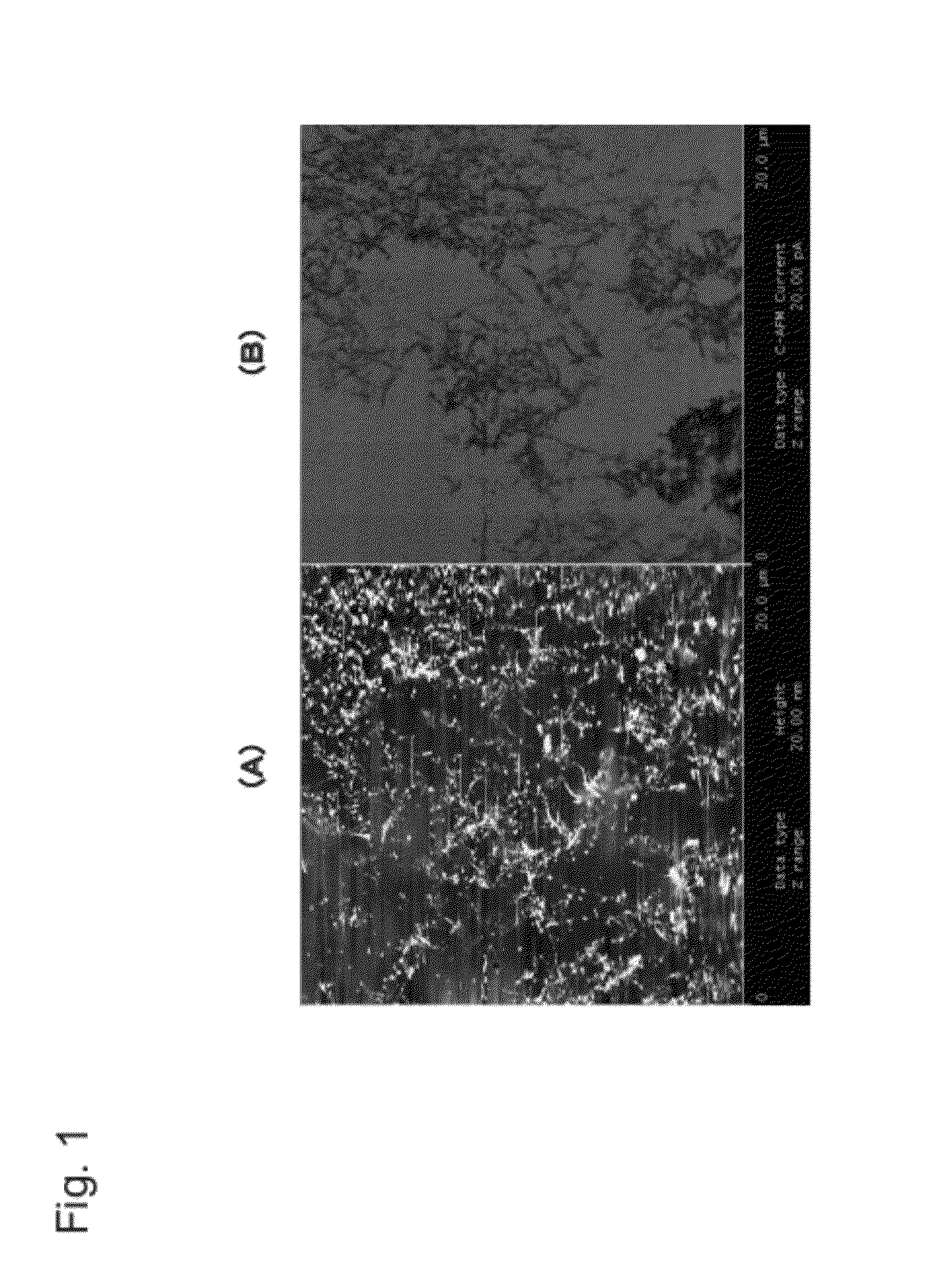Carbon nanotube dispersion liquid and method for manufacturing semiconductor device
- Summary
- Abstract
- Description
- Claims
- Application Information
AI Technical Summary
Benefits of technology
Problems solved by technology
Method used
Image
Examples
first exemplary embodiment
[0063]In this exemplary embodiment, single walled CNTs (SWCNTs) were added in the proportion of 1 mg to 100 ml of each of mixed solvents using xylene as a nonpolar first organic solvent and using various polar organic solvents as a second organic solvent, and the mixtures were further ultrasonically irradiated to prepare CNT dispersion liquids with a concentration of about 10 ppm.
[0064]The single walled CNTs used here were previously subjected to strong acid treatment, and a minute metal catalyst used during the synthesis of the CNTs, and amorphous carbon and the like produced simultaneously with the CNTs were removed, and the purity of the CNTs was increased. It is generally known that in such single walled CNTs whose purity is increased through strong acid treatment, the surface is provided with a functional group, such as a carboxyl group, contributing to dispersibility. For the single walled CNTs, those fabricated by the Hipco (High Pressure Carbon monooxide) method (manufacture...
second exemplary embodiment
[0073]In this exemplary embodiment, single walled CNTs were added in the proportion of 1 mg to 100 ml of each of mixed solvents using n-tetradecane as a nonpolar first organic solvent and using various polar organic solvents as a second organic solvent, and the mixtures were further ultrasonically irradiated to prepare CNT dispersion liquids with a concentration of about 10 ppm.
[0074]For the single walled CNTs used here, single walled CNTs similar to those used in the first exemplary embodiment were used.
[0075]For the mixed solvents in this exemplary embodiment, n-tetradecane was used as the nonpolar first organic solvent, and 1,2-dichloroethane (dielectric constant: 10.3), triethylene glycol dimethyl ether, diethylene glycol diethyl ether, diethylene glycol dimethyl ether (dielectric constant: 5.97), and isopropyl alcohol (dielectric constant: 18.62) were used as the second solvent mixed with the first organic solvent. The mixing ratio (mass ratio) of n-tetradecane, the first organ...
third exemplary embodiment
[0083]In this exemplary embodiment, single walled CNTs were added in the proportion of 1 mg to 100 ml of each of mixed solvents using 1,2-dichloroethane as a polar second organic solvent and using various nonpolar organic solvents as a first organic solvent, and the mixtures were further ultrasonically irradiated to prepare CNT dispersion liquids with a concentration of about 10 ppm.
[0084]For the single walled CNTs used here, single walled CNTs similar to those used in the first exemplary embodiment were used.
[0085]For the mixed solvents in this exemplary embodiment, 1,2-dichloroethane (dielectric constant: 10.3) was used as the polar second organic solvent, and n-tetradecane, mesitylene (dielectric constant: 2.279), and xylene (the dielectric constant of m-xylene: 2.374) were used as the first organic solvent. The mixing ratio (mass ratio) of the first organic solvent to 1,2-dichloroethane, the second organic solvent, was 1:1.
[0086]As comparative examples, a dispersion liquid using...
PUM
 Login to View More
Login to View More Abstract
Description
Claims
Application Information
 Login to View More
Login to View More - R&D
- Intellectual Property
- Life Sciences
- Materials
- Tech Scout
- Unparalleled Data Quality
- Higher Quality Content
- 60% Fewer Hallucinations
Browse by: Latest US Patents, China's latest patents, Technical Efficacy Thesaurus, Application Domain, Technology Topic, Popular Technical Reports.
© 2025 PatSnap. All rights reserved.Legal|Privacy policy|Modern Slavery Act Transparency Statement|Sitemap|About US| Contact US: help@patsnap.com



